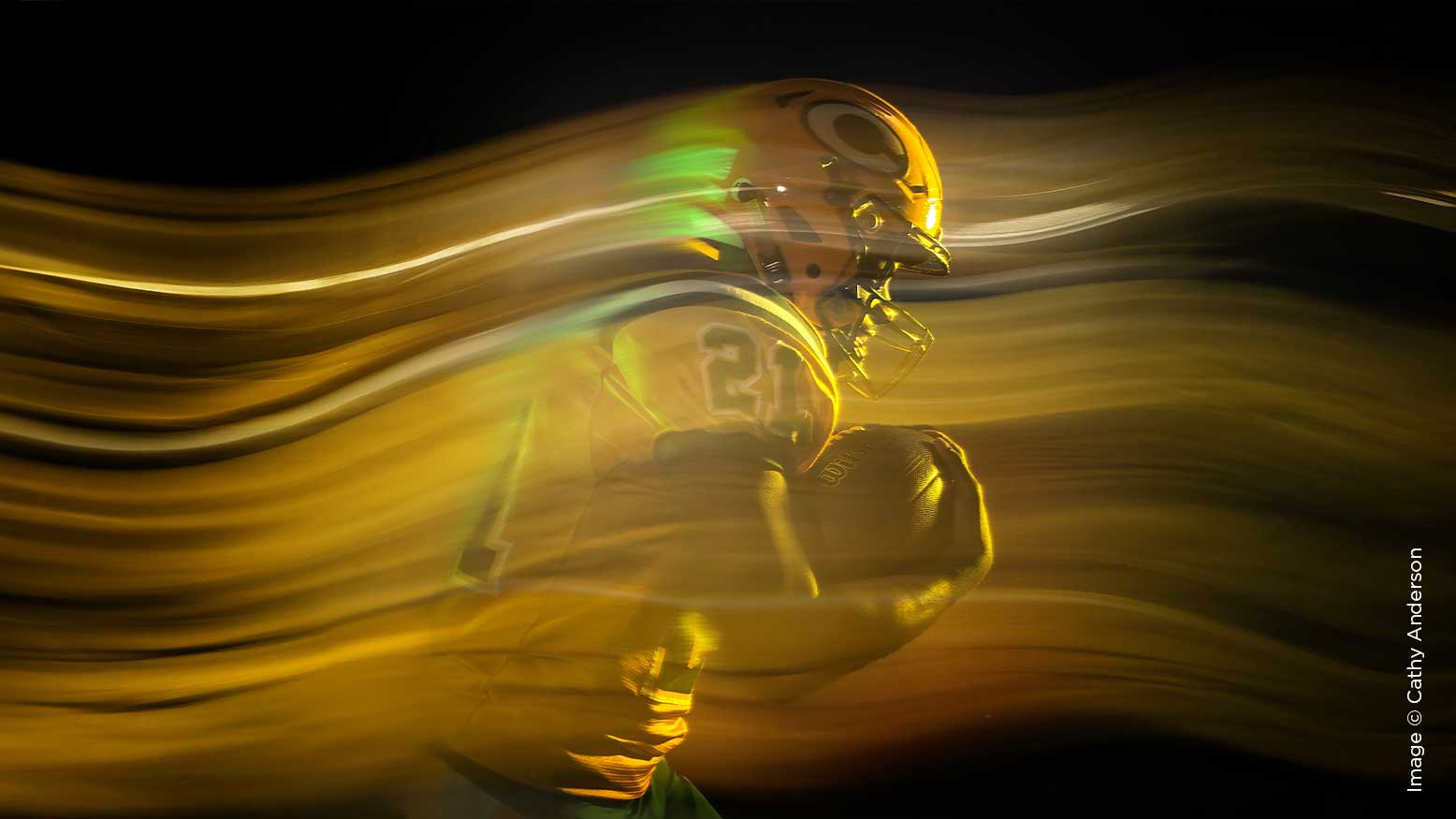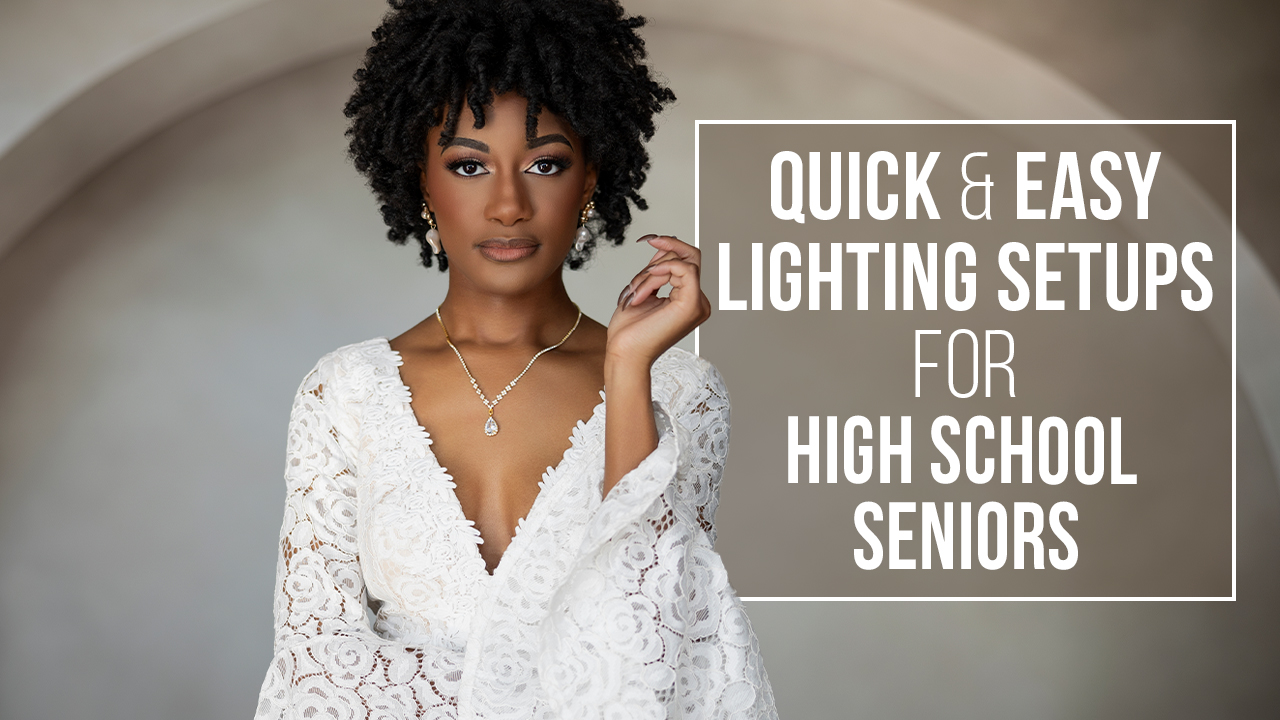The Most Important Question to Ask Senior Clients with Cathy Anderson
Remember getting your picture taken as a kid? Everyone dressed the same and was herded like cattle into the local big-box studio. It was a scripted experience that involved the same poses, a cyclical recipe regarding what to wear, and a cold and distant approach to create quick pictures in large quantities. The quicker the better—creating revenue was more important than the client. Fast pictures meant that quantity was king and that squeaky toys were more heavily relied upon to create smiles, rather than establishing a personal connection with clients. Is that what truly defines a positive and memorable client experience? Absolutely not! The old formula made clients feel like a number—like they weren’t important. That strategy eventually led to a collective negative attitude toward portraiture, making it harder for modern photographers to create positive memories. The words “take your picture” are often associated with bad experiences from the past, allowing clients to assume that all future “picture” or “photo” experiences will be the same.
Most of us have been there, so this means that we possess a powerful set of tools that we can use to tailor a more positive and meaningful experience for our current and future clients. Negative experiences from the past make it more difficult to convince a client that the experience with your studio will be different. However, a little hard work can help you break that barrier and gain the trust of clients who will become fiercely loyal to your brand.
Where do you begin the process of turning the tide? It begins with a powerful question you must ask each client:
“WHAT DO YOU WANT?”
I know this may seem straightforward, but how will you know how to turn a negative experience into a great one if you don’t have the basic knowledge of what your client wants? First, ask and actively listen to their answers. Client responses to this question are the key ingredients for crafting a wonderful experience for them, transforming unpleasant memories from the past into a solid rapport with your studio. Once you have a firm understanding of your client’s vision, needs and desires, use that knowledge to form a great experience with your client. Merriam-Webster dictionary defines “experience” as “the conscious events that make up a personal encounter.” Each event and memory a client experiences throughout their time with you will determine how they feel about your studio—positively or negatively. Take each informational nugget they give you, listening intently to their responses, and leverage that knowledge to bring their words to life. The most powerful item in your toolbox that will cultivate client satisfaction is your active effort to transform negative experiences from the past into a positive experience with your studio. Author Jim Kwik says, “information with emotion is remembered. Clients don’t buy based on logic; they buy based on emotion.” When a client equates a great experience with your studio, they will remember positive emotions and reach out to you in the future as a loyal client.
What does a great experience look like for portrait clients? We must first help clients understand the difference between portrait artists and regular photographers. The biggest challenge we face as portrait artists is re-educating the public about the definition of portrait art versus a simple snapshot or photo. The advent of advanced smartphone and digital camera technology, combined with easy access to both, has severely diluted the art of our industry and the title “professional photographer.” A friend of mine once said:
“If people perceive you as an artist, they will buy art. If they perceive you as a photographer, they will buy photos.” –George P. Joell III, CPP
A client’s perception of you is extremely powerful; the words you use to describe your photographic style will dictate the clients you attract and whether the journey will be effortless or difficult. First, understand that you are a creator of memories—artwork proudly displayed in client homes that illustrates their story and history. Strive to call yourself a portrait artist and separate yourself from other photographers. Even if this notion sounds egocentric, understand that it is not. Imagine the amount of time and money a surgeon invests in learning to operate on a human body; their title is not seen as an arrogant moniker, but one that was earned. An artist creates a work of art, requiring education, apprenticeships, and investment of time, money, heart and skill. Photography is a profession made of artists; we spend years learning our craft, using light as our primary foundation and source of creation, not technology. Our duty is to portray (to define or describe a person in a work of art) a client’s genuine personality in a portrait. That includes learning how to be comedians, psychologists, light-shapers, seamstresses, problem-solvers, etc. We invest ample time getting to know a client’s needs and personality, resulting in gaining their trust. After that is achieved, our journey will be comfortable and fun, fostering a strong portrait artist-client relationship that will produce organic portraits tailored for each client.
After you identify as a portrait artist, the next step is to define your own style. Seek out words that describe your personal style, vision, and beliefs. If you can’t find your own words, ask your friends and clients about their ideas to describe your portrait art. Once you define who you are artistically, clearly communicate it throughout your reach—social media, art displays, and marketing. Broadcasting your artistic persona, style, and vision will help you educate and attract the right clients. I know that Google will have plenty of choices for price shoppers who seek a quick photo session like the ones we endured as kids, but I want to be sought after within my community as the unique artist who is worth the investment.
Transitioning into the senior portrait experience, how do we translate this information into a positive encounter with your studio? Here are some tips to follow:
- Before you interview potential clients, practice identifying as a portrait artist. and consistently use the correct vocabulary that will differentiate your studio.
- Call potential clients on the phone and meet with them at your studio, asking what they want. Actively listen to them as they describe their needs and vision, and make it clear that you are excited to collaborate with them.
- Make sure you include both mom and the senior; even though mom is paying for portraits, she still wants her child’s personality captured in the end product. The most effective way to do so is to build a comfortable environment where seniors can express themselves and have fun.
- Connect with seniors and ask about what they love most, including it in the portrait session. When a session focuses upon a senior’s passions, they settle into a familiar environment with genuine expressions.
- Be an expert and don’t be a salesman; offer suggestions and guide them through the process, discussing details regarding clothing, pricing, portrait finishing, etc.
- Talk with them and help clients know they are important to you; transparency and great conversation are two big ways to earn trust.
Gaining a senior family’s trust is paramount, and it begins with collaboration. It is our job as portrait artists to create a shared vision with our clients and to make it clear that the journey is a team effort. Start by creating a relaxed environment for communication and letting your client know that their thoughts are important. Don’t forget to ask the golden question—“What do you want at your session?” Encourage your clients to freely share their thoughts, giving you the answers you need to translate their vision into stylized portraits that they will love. Finding out what to photograph is just as simple as asking a client what they want. Generally, moms want close-up, smiling portraits. Seniors want to look epic and stylish, creating something totally different compared to their classmates’ senior portraits. At my sessions, I make sure to photograph both types of portraits so that everyone will be happy, while still illustrating it through my style of portraiture. Most importantly, treat problems with grace and don’t panic. Business 101 teaches that great customer service is about the client, not you. If the unexpected happens, listen and address the problem with patience. Work hard to resolve issues with the client so they know their satisfaction is your top priority.
As you listen, you will unlock exactly what you need to craft personalized art for your clients. Human beings naturally align with companies who create personal, client-focused experiences, paired with great service and expertise. To produce the best client encounter possible, spearhead a collaborative effort with them to help them feel valued and provide expertly tailored service and craftsmanship. This mutual approach will differentiate your studio from other photographers and illuminate you as an expert portrait artist who cares about more than just the bottom line.





